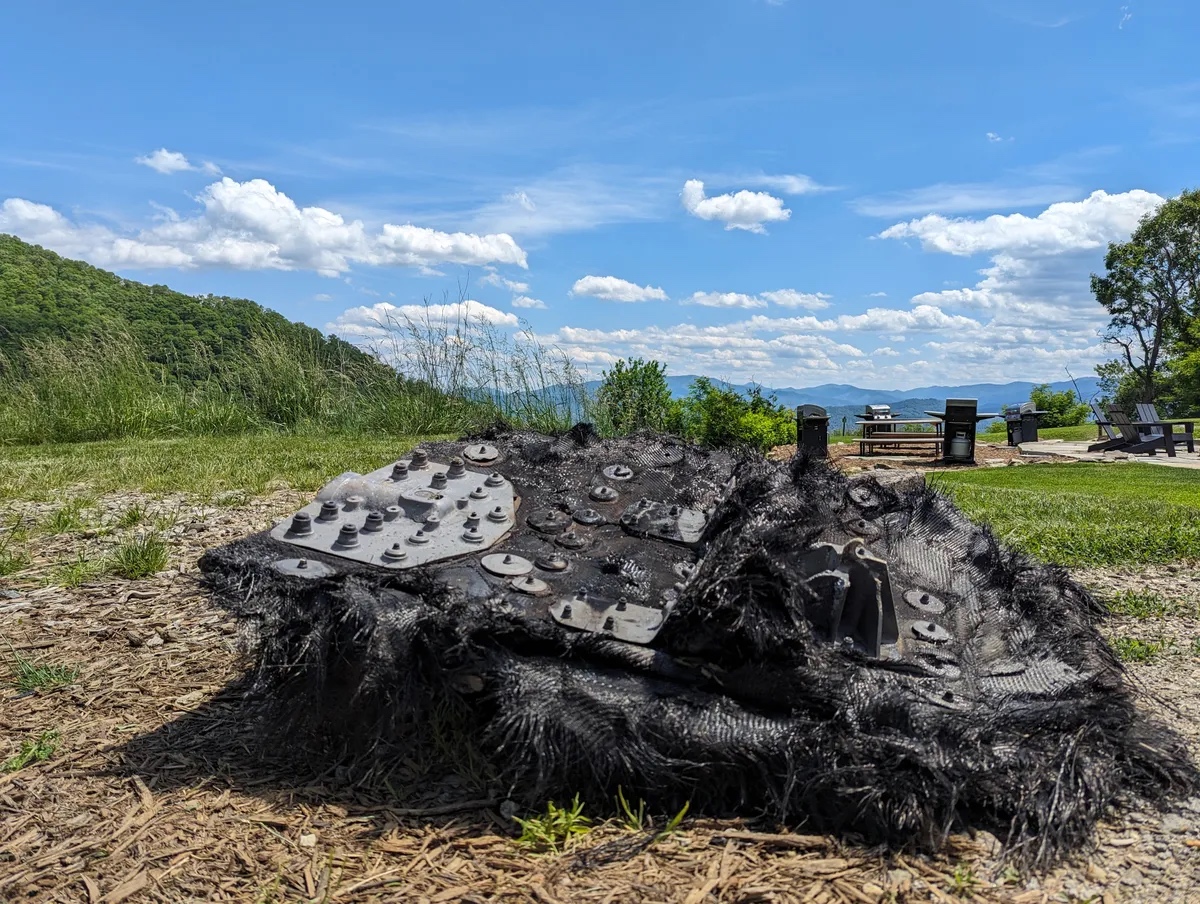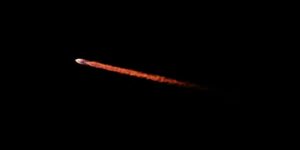WASHINGTON — NASA and SpaceX are investigating how to modify the Dragon spacecraft’s re-entry process to limit the amount of debris from the spacecraft’s trunk section that reaches the ground.
In several cases, debris from parts of the trunk of the Dragon spacecraft ejected from the capsule before the capsule performed its de-orbit burn has been found on land. These include debris from the trunk of the Crew-1 Crew Dragon found in Australia in 2022; the Ax-3 Crew Dragon, which crashed in Saskatchewan in February; and the Crew-7 trunk, fragments of which were found in May in North Carolina.
In August 2022, shortly after Crew-1 debris was found in Australia, a SpaceX representative downplayed the incident as an isolated incident. “This was all within the expected analyzed space of what could happen,” Benji Reed, senior director of human spaceflight programs at SpaceX, said at a NASA briefing. “However, just as we do at launch and every return, we’re looking very closely at the data, learning everything we can, and always looking for ways to make things better.”
After the more recent debris sightings, NASA and SpaceX now acknowledge that improvements are needed. The agency recently said initial studies expected the trunk to burn up completely on re-entry. “NASA and SpaceX will continue to explore additional solutions as we learn from the recovered debris,” NASA said.
“We did an analysis before Demo-2, and obviously the models don’t do very well with the trunk,” Steve Stich, NASA’s commercial crew program manager, said in an interview after a Starliner briefing before the mission’s June 6 launch. He said it was probably because of the composite materials used in the trunk. “It’s almost like a thermal protection system.”
The solution NASA and SpaceX are considering involves changing de-orbit procedures. Currently, the trunk is released before the capsule completes its orbital burn. This means that the trunk can remain in orbit for months before performing an uncontrolled re-entry.
Instead, Stich said engineers are exploring performing a burn from orbit and then releasing the trunk. This would provide greater control over where the trunk re-enters, ensuring that any remnants that survive re-entry fall into unpopulated regions.
“We are in the process of doing that work right now,” he said. “I would like to have something in place next year if we can, but we have to do the right analysis. We have to make sure it’s safe for the crew.
The challenges of this alternative approach include using extra propellant to perform a burn from orbit while the boot is still attached, and then figuring out how best to separate the boot after the burn. Stich said engineers are looking at several ways to do this, which would cause the trunk to descend lower than the capsule on reentry so that any debris would land in the ocean.
Concerns about the risks of falling debris have been heightened not only by Dragon’s trunks, but also by part of the ISS’s battery rack, which performed an uncontrolled reentry on March 8. A piece of that trunk, weighing nearly three-quarters of a pound, survived re-entry and struck a house in Naples, Florida. Debris fell through the roof of the house but caused no injuries.
On June 21, the law firm Cranfill Sumner LLP announced that it had filed a lawsuit against NASA for about $80,000 in damages caused by the debris. The filing, misreported by some media outlets as a lawsuit, is instead a claim under the Federal Torts Act, which gives NASA six months to respond to the claim.
Micah Nguyen Worthy, the attorney who filed the suit on behalf of the family whose house was damaged, noted that under a space treaty known as the Liability Convention, the United States would be “absolutely responsible” for damages if the debris hit another country, but the same absolute liability does not apply here because the damage occurred in the United States.
“Here, the US government, through NASA, has the opportunity to set the standard or ‘set the precedent’ for what responsible, safe and sustainable space operations should look like,” she said in the statement. Paying the claim, she concluded, “would send a strong signal to both other governments and private industries that such victims should be compensated, regardless of fault.”
Others see opportunity in the falling debris. Debris from Crew-7’s trunk landed on a luxury campsite called The Glamping Collective, which exhibited photos of it. “We invite you to come experience this for yourself!” its website states, noting that the debris will be displayed at the start of a walking trail.



